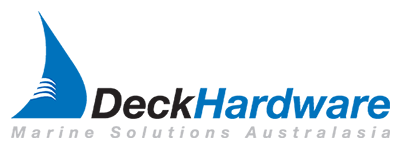Updated Safety and Application Instructions
Date Posted:1 May 2017
LIROS Ropes General Instructions.
General instructions
• All values for breaking loads and elongation are determined linearly under laboratory conditions in accordance with DIN EN ISO 2307. These values may vary for example caused by dynamic and static stress, UV-stress, temperature fluctuations, moisture, dirt, ageing and storage.
• The rope weight refers to dry, brand-new ropes. Due to fluctuations in humidity, contact with water and possible contamination the weight may vary depending on their type.
• There will be no liability for damages to ropes or caused by ropes, resulting from one or more application mistakes.
• The average work load should be about 30% of the breaking load, a previously defined maximum work load of 50% may not be exceeded.
• A knot in the rope reduces the breaking load of the rope by up to 70% depending on material and knots used.
• A non-destructive determination of the breaking load is not possible.
• If there is any doubt about the application or durability of the rope, contact a qualified person or the manufacturer of the rope.
Usage instructions
• New ropes are delivered in a number of ways including on a spool, hank, coil, reel or loose in boxes. When unrolling the rope length make sure there are no kinks and loops appearing whilst unwinding the rope.
• Only a technically professional treatment of the rope ensures long-term safety and the rope's practical value.
• Incorrect handling may cause the rope to be twisted, stranded ropes may be twisted or untwisted and braided ropes may lose their torque free construction. This may lead to the destruction of the rope and breaking load reduction.
• Over time a rope is subjected to unavoidable ageing, affected by various factors and experiences a slow breaking load reduction.
• Unused ropes should be stored in an appropriate manner (see storage instructions).
• All contact points and abrasive surfaces if they are unavoidable, should have extremely smooth surfaces. If possible, the rope should be sheathed with additional protection.
• When redirecting the rope, referring to the material, a D/d relation, where D is the diameter of the sheave and d the diameter of the rope, greater than 10 must be adhered to. High-tenacity fibres like Vectran® as well as Aramids should have a D/d relation of at least 15.
Harmful influences
• Chemical fibre ropes are damaged by UV-rays. This damage is dependent on material and intensity and causes brittle weak spots in the outer part of the rope.
• Friction under tension or dynamic movements of the rope, for example running over sheaves may cause excessive heat generation. Therefore, it may be that the rope is damaged or even melted due to thermal overload.
• Sharp edges or rough surfaces will damage the rope due to friction.
• Abrasive foreign objects in the rope (sand, salt, dust, etc.) lead to higher inner abrasion.
• Contact with chemicals of any kind (solid, fluid or gaseous) may have a negative impact on the rope and its characteristics.
Check/Verify/Monitor
• Ropes must be checked regarding their technical condition, usability and possible damage before and during each use.
• The evaluation and verification of fibre ropes in use mainly comprises the following:
o Fibre breakage and abrasion
o Fractures of whole strands
o Crushing and cutting
o Kinking and looping
o Technical state of the rope's end connections
o Damages caused by aggressive materials or intensive UV-irradiation
o Burns and melting points
o Rotting appearances (natural fibres only)
• Every inspection should be documented in a “Rope inspection book".
• During a visual inspection, the complete rope must be checked.
• Splice points must be visually checked for changes.
• Damage of the rope caused by heat can be discovered by a fused or very smooth surface.
When to replace
• Ropes should be replaced should the following characteristics appear:
o Broken strands
o Breakage or abrasion of more than 10% of the yarn of the rope's cross section
o Kinking
o At melting points
o Loosening of splices
o Sheath/Cover breakage
o Cuts
• When in doubt about the rope's suitability, replacing is advised.
Maintenance/care
• When cleaning rope it is recommended to use lukewarm water and a PH-neutral soap.
• If using mechanical cleaning (washing machine) make sure to untangle the rope and place in a cloth/textile bag. Don't wash loosely in a washing machine.
• Avoid using softeners.
• Leave to air dry.
• Don't use external heat sources, this may cause rope damage.
Storage instructions
• Always store the ropes in a dry, well ventilated, cool and dark position. This ensures the longest possible product life.
• Avoid heat, moisture and contact with potentially harmful substances (solid, fluid or gaseous).
• Heavily soiled ropes must be cleaned and dried before storage.
• Despite proper storage a reduction of the breaking load occurs because of polymer degradation. For this reason, after more than five years of storage the rope should be assessed/tested before use. Ropes which are over ten years old, should generally be replaced.
• Storing rope in the form of a figure eight is advisable, laid as well as braided ropes can be stored without twist formation and this benefits drying out.
Safety instructions
• An overloaded rope has a great danger potential. Rope breakage can be life-threatening. Whipping effects of a breaking rope can threaten people in the rope's working environment. In case of breaking, the rope can whip back with considerable force and cause injuries.
• Rope ends must always be attached safely. Used rope terminals must be technically correct and suitable for the planned load.
• Never stand near or under lifted loads. In case of rope or sling breaking there is danger to life.
